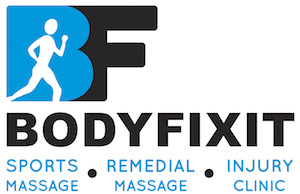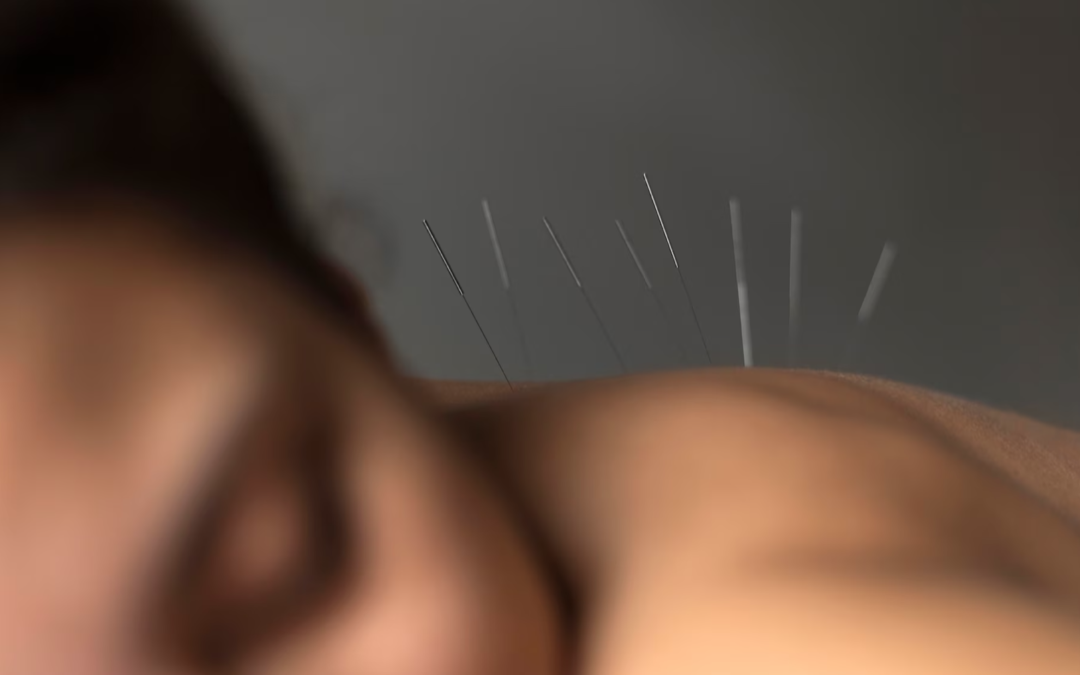It’s been a little while since we talked out dry needling and acupuncture!
While the name of the procedure may sound intimidating, dry needling is safe, minimally discomforting and often an effective technique for patients.
If you would like to have dry needling during your massage treatment sessions we will ask you to sign a specific dry needling and medical acupuncture consent form, but for now, here’s everything you need to know…

Acupuncture & Dry Needling
Acupuncture is traditionally a Chinese medicine technique that involves the use of fine needles to stimulate points on the body to help alleviate pain and treat a variety of medical conditions. It is based on the belief that the human body has 12 major pathways called meridians (lines of energy), each linked to specific internal organs and organ systems. It involves fine needles being inserted at certain ‘acupuncture’ points to restore the balance of energy, which when unbalanced is believed to cause pain and illness.
Dry needling doesn’t use acupuncture points, but uses other points found by palpation such as trigger points in muscles. In other words, these points aren’t pre-determined but vary according to the individual. Dry needling is often considered to be a Western approach to acupuncture and uses the same fine needles to stimulate anatomically-based ‘targets’ in soft tissues like muscles, tendon and fascia, rather than points along an energy line as in acupuncture.
What we do
Using very small (often 0.25mm thickness) single use needles, we target and work deeper into muscles, fascia, skin and scar tissue. This is very useful for treating pain, muscle tension and restrictions in movement.
Dry needling can help to:
Release trigger points (areas of tension in muscle with referral patterns), assist healing, provide pain relief local to the area and more whole body, can have an effect on scar tissue.
We can also use some of the traditional Chinese medicine acupuncture points to have a greater impact on the body and healing. i.e we may put a needle in your hand even though the pain is in your neck.
How does dry needling work?
When your muscle is overused, it goes into an energy crisis where the muscle fibers aren’t getting an adequate blood supply. When they don’t get the normal blood supply, they don’t get the oxygen and nutrients that allow your muscle to go back to its normal resting state.
When this happens, the tissue near your trigger point becomes more acidic. Your nerves are sensitised, which makes the area sore and painful.
Stimulating a trigger point with a needle helps draw normal blood supply back to flush out the area and release tension. The prick sensation can also fire off nerve fibers that stimulate your brain to release endorphins, your bodies homemade pain medication.
Once a trigger point has been located, a needle will be inserted through your skin directly into it. We might move the needle around a little to try to get what’s called a local twitch response – a quick spasm of your muscle. This reaction can be a good sign that your muscle is reacting.
Some people feel improvement in their pain and mobility almost immediately after a dry needling session. For others, it takes more than one session.

Does dry needling hurt?
Trigger points are usually painful to the touch. So, before the needling, you may experience some pain while your provider is locating the trigger point.
You may also feel discomfort during the needling. Sometimes, people don’t feel the needle going in because it’s so small, but other times, people will feel a prick. When the needle is in the trigger point, it can be painful and cause a twitch response. Afterward, you may feel tightness or soreness near the insertion site, but it’s important to keep moving and stretching.
What does dry needling do?
Dry needling may help relieve pain and increase your range of motion. It helps by creating an inflammatory response (the way your body heals). This can be seen by redness, heat, swelling or pain. Conditions that dry needling may treat include:
- Joint issues.
- Disk issues.
- Tendinitis.
- Migraine and tension-type headaches.
- Jaw and mouth problems, such as temporomandibular joint (TMJ) disorders.
- Whiplash.
- Repetitive motion disorders, such as carpal tunnel syndrome.
- Spinal issues.
- Pelvic pain.
- Night cramps.
- Phantom limb pain.
- Postherpetic neuralgia, a complication of shingles.
- Leaving the dry needles in for a period of time 10-20 minutes creates viscoelastic relaxation. This helps to create changes and healing with in the tissues being treated.
- Winding the needle winds up the myofascia fibers within the muscle or tissue, when the needles are removed this then releases the tension creating a local stretching to the tissue. This helps to lengthen and release tension within the tissue.
Locally – this creates a local release of pain relieving chemicals (nociceptive) which effects the pain mechanism with the local tissue being treated.
Spinal nerves – pain transmitters within the spine become desensitised which helps to reduce pain levels (neurogenic).
Brain – needling can help to create pain suppression within the whole body (psychogenic). It can also effects the limbic system which can also effect our emotional experience of the pain we are in. This has been shown in research to be really beneficial in treating chronic pain.
Known side effects of dry needling and acupuncture:
– Some people can experience drowsiness after treatment
– Minor bleeding and bruising may occur (about 3% of patients)
– Occasionally (1%) of patients can experience symptoms feeling worse for a period of time after treatment. Generally this is a considered a good sign of healing.
– Fainting can occur in certain patients particularly on first treatment

Image: https://ilaaom.org/
References: https://my.

